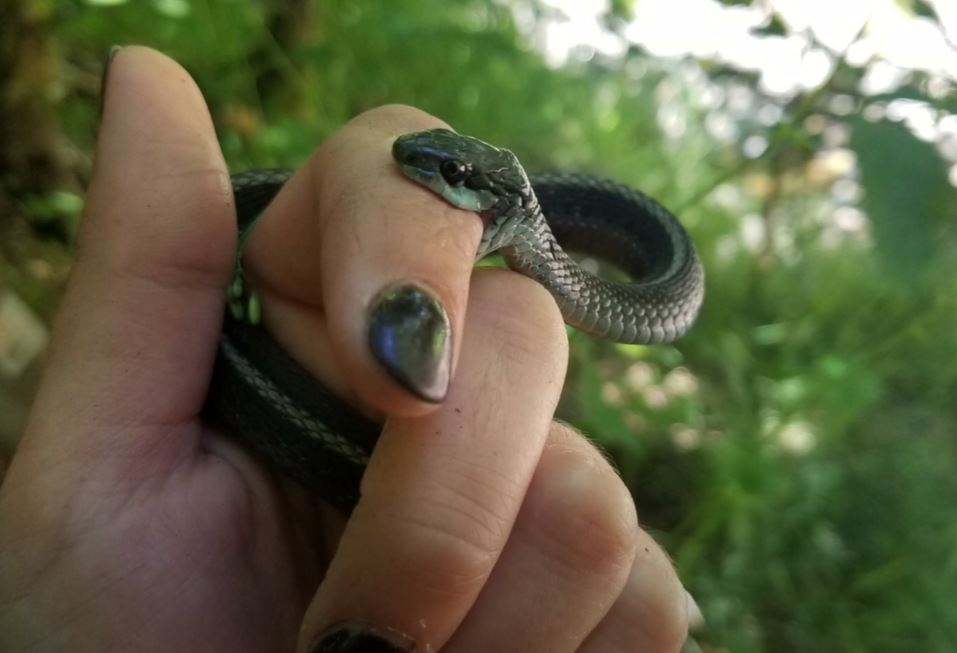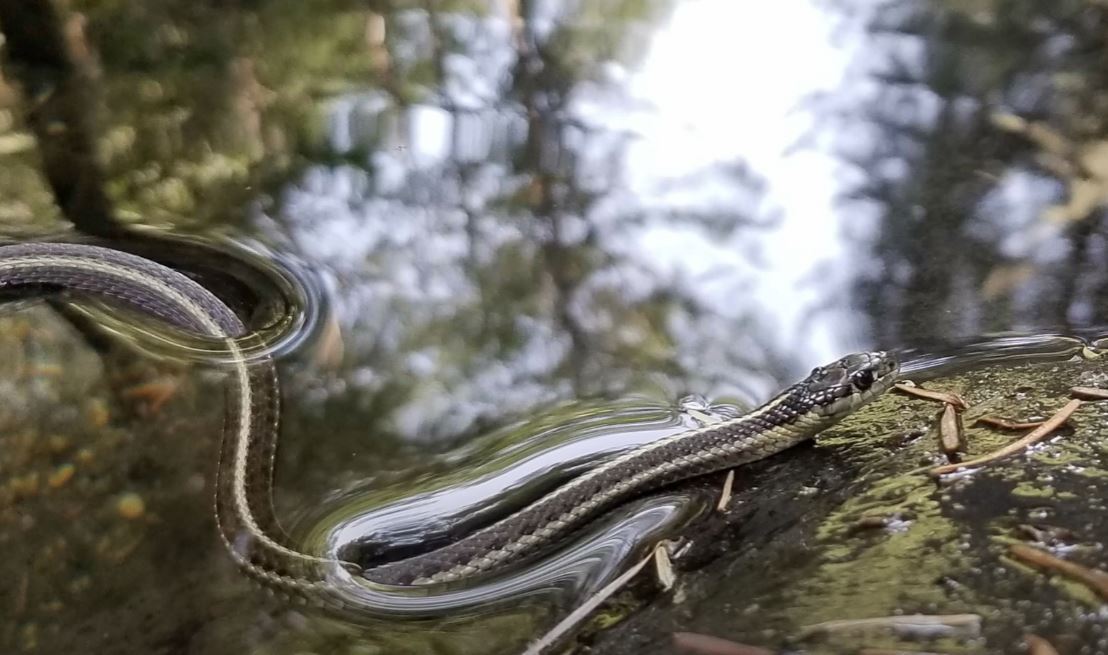What Does a Garden Snake Look Like?
What Does a Garden Snake Look Like? Not only any old reptile, but garden snakes—also called garter snakes—are the modest masterpieces of nature. One of the most often seen non-venomous snakes in gardens and yards is slender, elegant, and quite flexible. Though they could seem like regular animals at first glance, upon closer inspection, you will find a vibrant, complex design that brilliantly recounts survival, camouflage, and the wonders of evolution.

The Stripes on Nature’s Canvas: Garden Snake
The characteristic stripe pattern of a garden snake is what distinguishes it. Usually black or brown, most often these snakes have a dark body with light stripes running the length of their bodies. Often yellow, white, or red, these stripes serve more than just decoration; they are a survival tactic for the snake. These snakes got their name from what they resemble—old-fashioned garter straps.
Particularly in areas covered in dry leaves or dense grass, where their look matches natural patterns, the light stripes offer camouflage. Whether you come across one sunning itself or lounging in the underbrush, this striped look is a dead certain way to spot a garden snake.
Variations in color: A Wild Garden’s Diverse Palette for Snakes. Not limited to one color scheme, although most of them are black or brown, occasionally you can find variants of green or reddish colors. Furthermore,e vary in width and strength are the stripes; some snakes show a more vivid yellow or a deeper red color. Usually resulting from subspecies variances, these color changes give every encounter a distinctive natural artistic touch.
One should be especially attentive to the belly. Usually a pale shade of yellow or white, the underbelly of a garden snake stands out sharply from its darker body. Some variants, however, may have checkered patterns close to the stripes, which would add still another level of complexity to their look.
A Smallish Snake: Dimensions of the Garden Snake

Usually measuring two to three feet, garden snakes are a reasonable length for most yards and gardens. Although the usual length is between two and three feet, it is not unusual to come across specimens spanning four feet long. These snakes will find an ideal fit in this scale for slithering across underbrush, grass, and around garden beds. Their long, thin bodies enable them to move freely—a necessary ability for prey hunting or predator avoidance.
Garden Snake Compared to Ribbon Snake: The Minor Variations
A garden snake initially seems to be like a ribbon snake, but there are important distinctions that will help you set them apart. Usually more slender than garden snakes, ribbon snakes have elongated, more pronounced stripes. Unlike ribbon snakes, garden snakes often feature darker, broader bars along their lips. Furthermore, not often seen in ribbon snakes is a checkered pattern on the sides of their body, found in garden snakes.
Particularly in places where both kinds might coexist, these minute differences can help you determine which species you are working with.
Charm of Checkered Garden Snakes
A sight to behold are the checkered pattern garden snakes. Not only is the complex, almost puzzle-like arrangement of dark and light scales on their bodies aesthetically pleasing, but it also helps them to hide. Their checkered pattern allows them to fit their environment and facilitates human or predator detection avoidance. In environments where they spend most of their time hiding under rocks, logs, or thick vegetation, this evolutionary feature is especially successful.
The Ecosystemic Function of the Garden Snake
Garden snakes are quite important in local ecosystems, even if they look rather scary. Generally speaking, they are benign to humans and not venomous. Actually, especially in gardens where they function as natural pest controllers, they are helpful animals. Eating insects, small amphibians, and even slugs helps preserve the delicate equilibrium of nature. Garden snakes are therefore a vital component of the ecosystem of your garden since they can even help control populations of more harmful pests.
Where might one find garden snakes? From a Worldwide View
Though found all over North America, garden snakes vary somewhat depending on their region. For example, garter snakes are often blue in Florida, a shockingly beautiful hue that contrasts with the terrain. Particularly active at night, the checkered garter snake takes front stage in Texas. In California, meanwhile, several red garter snakes flourish; each subspecies has unique traits and environmental adaptations.

Garden Snakes: Are They Threatened?
One of the most often held false ideas about garden snakes is that they are dangerous. Garden snakes are non-venomous. These innocuous species neither endanger humans nor anything else. Garden snakes are not particularly dangerous, even if they may hiss, coil, or even strike defensively when threatened. These snakes should be valued for their ability to help control insect numbers in our gardens, not feared.
Key Identification Advice for Spotting a Garden Snake
If you’re looking for a garden snake in your yard, search for these salient features:
Usually between two and three feet long, some grow to be four feet.
Color: A dark body with lighter stripes (yellow, white, or red; usually black or brown).
Search for longitudinal stripes running along the sides and rear of the body on the Stripe Pattern.
Some snakes exhibit a checkered pattern close to the stripes.
Usually pale yellow or white, the belly stands out as quite different from the body.
Should you come across a snake that fits these descriptions, most likely it is a garden snake.
Bio of Author and Gardening Expert Becca Badgett: Attribute Details NameBecca Badgett: Author and gardening expert with specialismGardening with Succulent and Cactus Plants PublicationsCo-author of How to Create an Emergency Management Plan, Garden Viewpoint, plus years of expertise in writing and gardening; Website: Gardening Knowledge How
Passionate gardener Becca Badgett co-authors books, including How to Grow an EMERGENCY Garden. Having written and worked in gardens for more than ten years, she has developed a reputable voice in the gardening community.
Visit Gardening Know How for further ideas.






